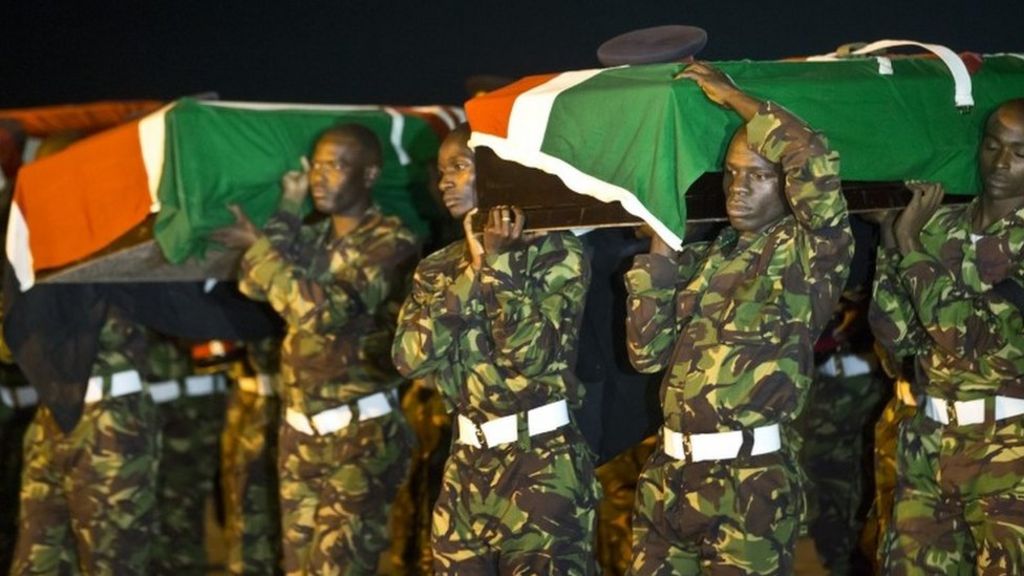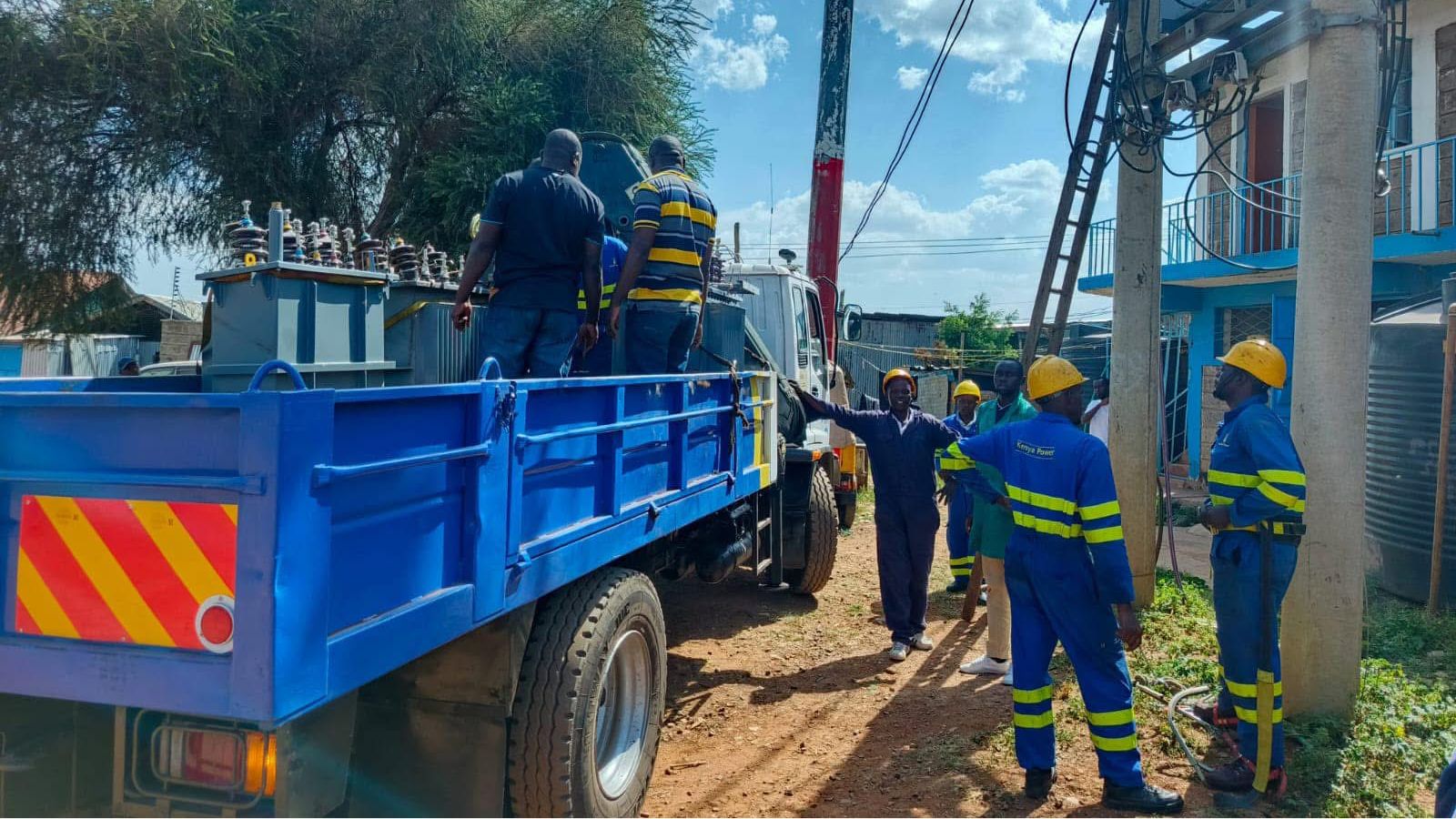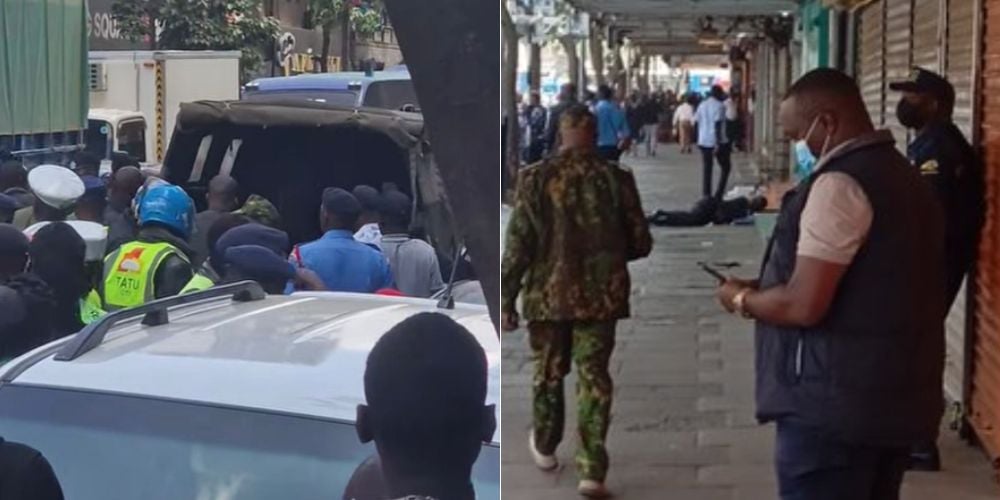January 15, 2021, marked five years since the tragic killing of Kenya Defence Forces (KDF) Soldiers after their camp was overrun by Al-Shabaab militants.
Reports now indicate that Somali Security agencies were aware of an attack build-up by militia at El Adde prior to the raid on the KDF camp that left 150 soldiers dead.
The lack of a secure African Union Mission to Somalia (Amisom) communication line meant that the Kenyan soldiers could not seek reinforcements from the closest contingent of peacekeeping soldiers in Somalia.
This was as Al-Shabaab militants overran the KDF camp.
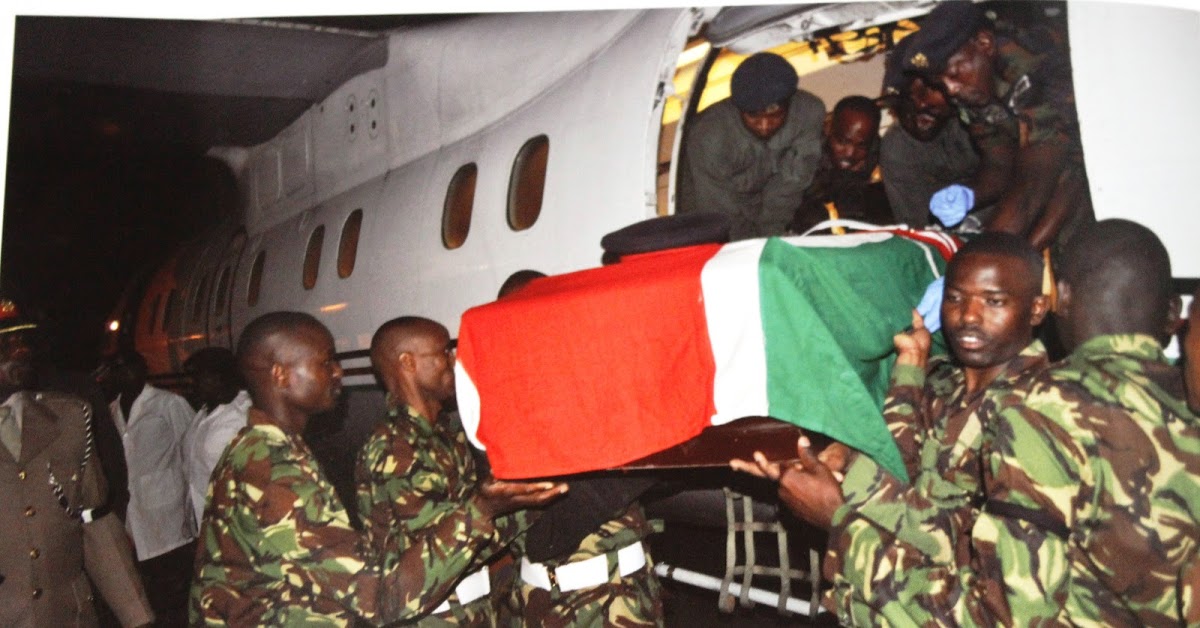
Read More
KDF Soldiers airlift the remains of their fallen colleagues killed during an attack in El Adde, Somalia on January 15, 2016. |Photo| Courtesy|
KDF soldiers braved the attack as they waited for reinforcements from other camps in the country.
The militants had forced their way into the camp using two vehicles packed with between 30Kgs to 50 Kgs of explosives.
A report by the United Nations Security Council in 2014 indicated that by the time their Kenyan colleagues were arriving at the camp it was too late.
"While the government of Kenya is yet to release official casualty figures, the Monitoring Group believe that some 150 Kenyan soldiers were killed during the attack, making it the largest military defeat in Kenyan history," the report stated.
"In addition at least 11 soldiers were captured alive and subsequently held hostage in two separate groups by Al Shabaab in Middle Juba. Since their abduction, the Monitoring Group received information concerning the changing whereabouts and status of the captives, which it has shared with the Kenyan authorities through an intermediary."
Kenya presented details of the bloody mission to the International Court of Justice (ICJ) to show the disastrous terrorism incubated in Somalia which is also claiming part of Kenya's coastline in the Indian Ocean.
The Monitoring Group in 2016 submitted a report to the UNSC which detailed the blunders that led to the tragedy.
The Groups detailed that unreliable intelligence, hostility from the local community, weak positions in military installation and a broken Amisom system worked to disadvantage KDF troops.
The report indicated that Amisom's deficits in gathering effective intelligence and lack of engagement with local communities made the attack more effective.
The worst of it all was that Somalia was aware of a planned attack targeting Kenyan soldiers who had moved into Somalia to fight the Al Shabaab.
"Somalia security sources told the Monitoring Group that they had been aware of a concentration of Al Shabaab fighters around El Adde, although the precise target was unknown and that they had conveyed information to their Kenyan interlocutors. Following the attack, however, the Kenyan forces denied that they had been forewarned," the report says.
The Group in its report states that the local community Marehan Clan felt that the Kenyan Military actively supported their rival Ogaden Clan.
The report cited a 48-minute propaganda video by the Al Shabaab, noting that the militants were not well organized, thus another oversight aided their raid on the KDF troops.
"While the video depicted a highly uncoordinated and tactically unsound assault on the part of Al Shabaab, the Kenyan forces also failed to implement basic defensive measures, such as constructing fortified barriers at the entrance to the camp and neglecting to man-machine gun and mortar emplacements," the report states.
The attack further showed cracks in the Amisom communication system- the inability to quickly call for reinforcements.
"Even though the closest Amisom reinforcements to El Adde were stationed in Busaar, at a base to the southwest garrisoned by Ethiopian troops, the lack of a secure Amisom communications system prevented the Kenyan troops from contacting their Ethiopian counterparts for assistance. Instead, the closest military personnel to respond were Kenyan troops based inside Kenya, who arrived far too late to assist," the report revealed.
A security source on the ground in the aftermath of the attack later revealed to the Monitoring Group that the vehicles rigged with explosives had been delivered by, "soft skin vehicles and not by armored vehicles as had been reported widely in the media."
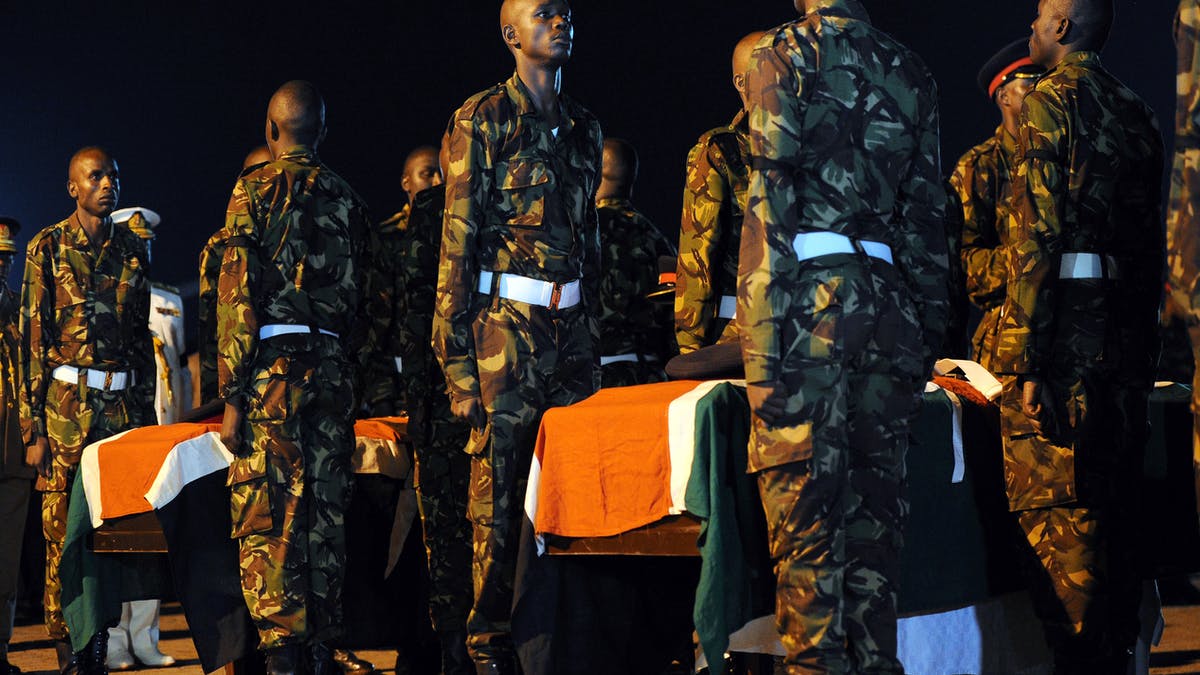
KDF Soldiers pay respects to their fallen colleagues killed during an attack in El Adde, Somalia on January 15, 2016. |Photo| Courtesy|
